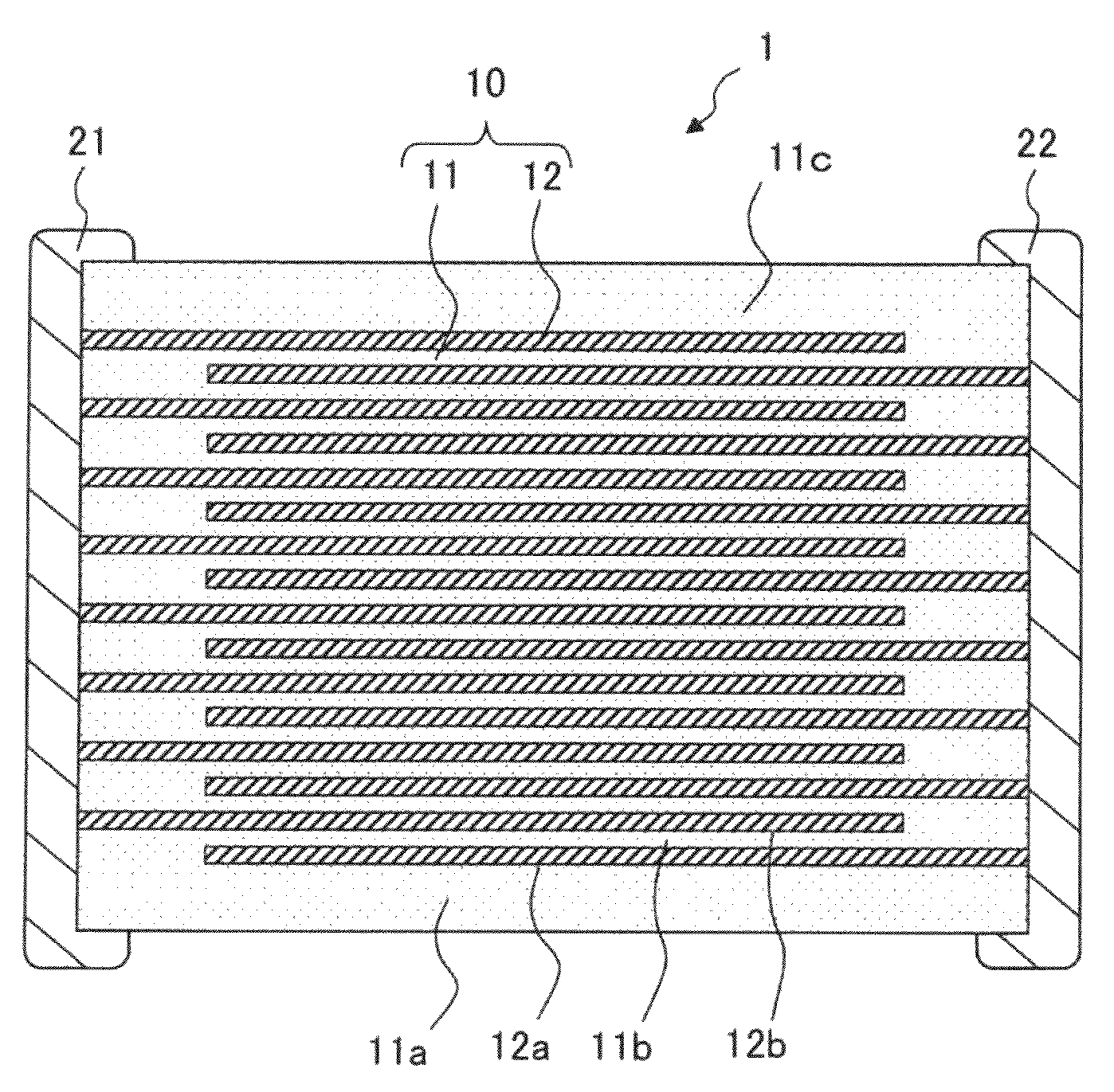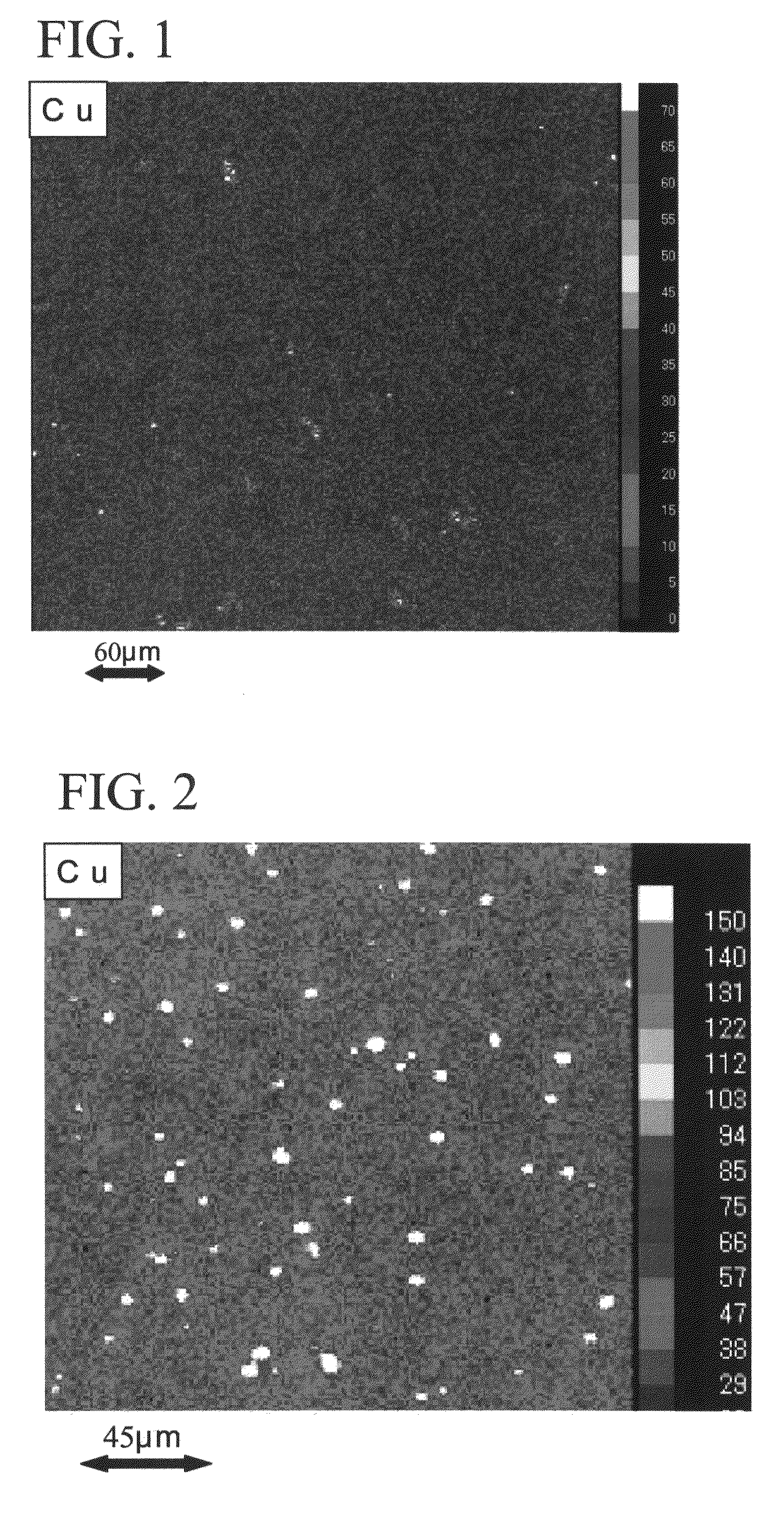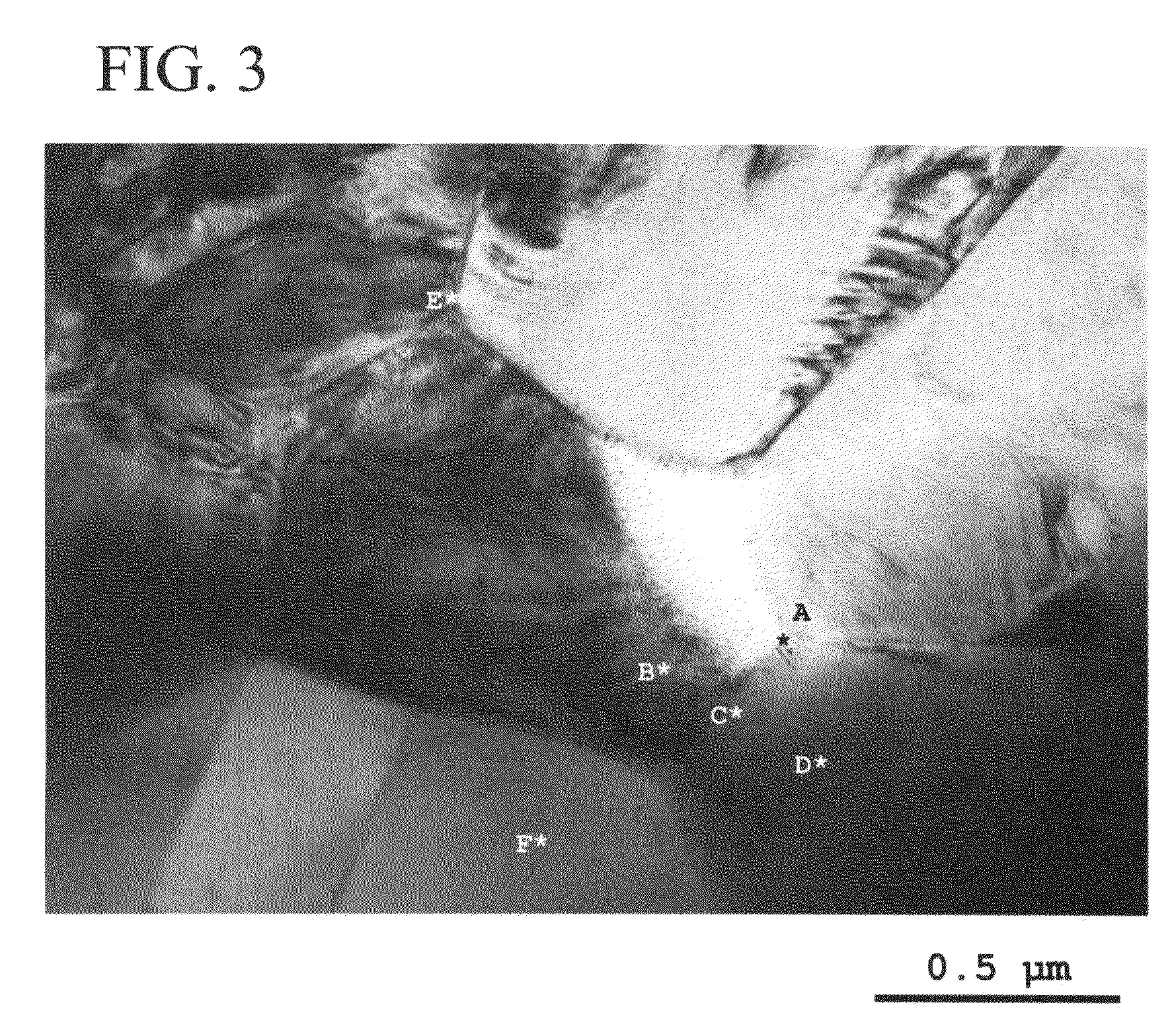Piezoelectric ceramic composition and laminated piezoelectric element
a technology of piezoelectric elements and ceramic compositions, which is applied in the field of piezoelectric ceramic compositions and laminated piezoelectric elements, can solve the problems of insufficient displacement of actuators required to drive at high voltage, and the inability to obtain laminated piezoelectric elements at low sintering temperature, and achieve the effect of sufficient displacemen
- Summary
- Abstract
- Description
- Claims
- Application Information
AI Technical Summary
Benefits of technology
Problems solved by technology
Method used
Image
Examples
example 1
[0113]In the present example, effects of Cu and Li were investigated by adding Cu as the first additive as Cu2O and Li as the second additive as Li2CO3 so as to give the contents shown in FIG. 6 in relation to the below-described main component. It is to be noted that the third additive was added as described below.
[0114]Main component: (Pb0.965Sr0.03)[(Zn1 / 3Nb2 / 3)0.02Ti0.46Zr0.52]O3
[0115]Third additive: Ta2O5, 0.2% by mass
[0116]Each of the piezoelectric ceramic composition samples shown in FIG. 6 was prepared as follows. First, as the raw materials for the main component, a PbO powder, a SrCO3 powder, a ZnO powder, a Nb2O5 powder, a TiO2 powder and a ZrO2 powder were prepared, and were weighed out so as to give the composition of the above-described main component. Additionally, a Cu2O powder, a Li2CO3 powder and a WO3 powder were prepared as the addition species of the first to third additives, respectively, and these powders were added to the base composition of the main compone...
example 2
[0124]Each of the samples shown in FIG. 7 was prepared in the same manner as in Example 1 except that the raw materials were prepared so as to give the value of a shown in FIG. 7 and to include the first to third additives as specified below in relation to the below-described main component. The samples thus obtained were subjected to the measurement of the piezoelectric constant d33 in the same manner as in Example 1. The results thus obtained are shown in FIG. 7.
[0125]As shown in FIG. 7, with the values of a falling within a range from 0.96 to 1.03, the improvement effect of the piezoelectric properties at high voltages can be enjoyed.
[0126]Main component: (Pba−0.03Sr0.03)[(Zn1 / 3Nb2 / 3)0.02Ti0.46Zr0.52]O3
[0127]First additive: Cu2O, 0.05% by mass
[0128]Second additive: Li2CO3, 0.025% by mass
[0129]Third additive: Ta2O5, 0.2% by mass
example 3
[0130]Each of the samples shown in FIG. 8 was prepared in the same manner as in Example 1 except that the raw materials were prepared so as to give the value of b shown in FIG. 8 and to include the first to third additives as specified below in relation to the below-described main component. The samples thus obtained were subjected to the measurement of the piezoelectric constant d33 in the same manner as in Example 1. The results thus obtained are shown in FIG. 8.
[0131]As shown in FIG. 8, with the values of b falling within a range from 0 to 0.1, the improvement effect of the piezoelectric properties at high voltages can be enjoyed.
[0132]Main component: (Pb0.995−bSrb)[(Zn1 / 3Nb2 / 3)0.02Ti0.46Zr0.52]O3
[0133]First additive: Cu2O, 0.05% by mass
[0134]Second additive: Li2CO3, 0.025% by mass
[0135]Third additive: Ta2O5, 0.2% by mass
PUM
| Property | Measurement | Unit |
|---|---|---|
| temperatures | aaaaa | aaaaa |
| melting point | aaaaa | aaaaa |
| melting point | aaaaa | aaaaa |
Abstract
Description
Claims
Application Information
 Login to View More
Login to View More - R&D
- Intellectual Property
- Life Sciences
- Materials
- Tech Scout
- Unparalleled Data Quality
- Higher Quality Content
- 60% Fewer Hallucinations
Browse by: Latest US Patents, China's latest patents, Technical Efficacy Thesaurus, Application Domain, Technology Topic, Popular Technical Reports.
© 2025 PatSnap. All rights reserved.Legal|Privacy policy|Modern Slavery Act Transparency Statement|Sitemap|About US| Contact US: help@patsnap.com



